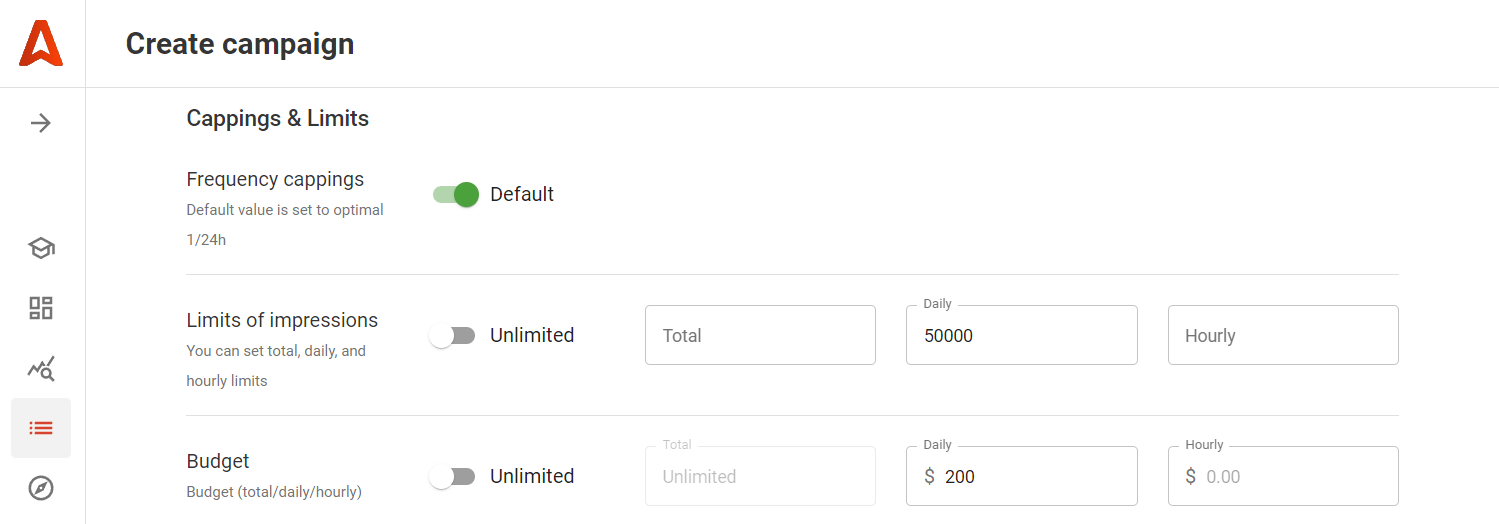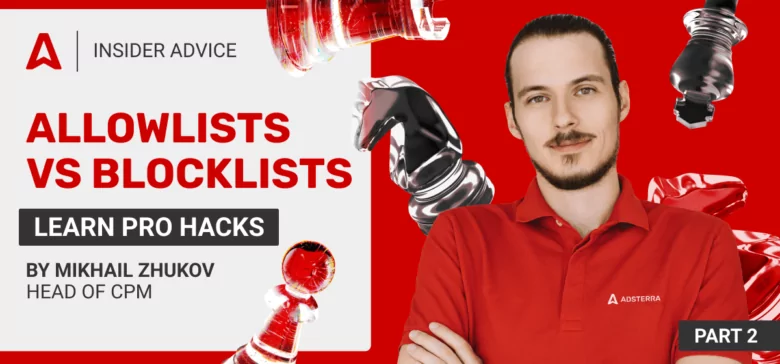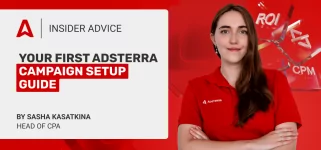Armed with blocklists (also: blacklists), affiliate marketers can save thousands of dollars. But when applied in the wrong time, blocklisting lead to a traffic and CR slump. In this Insider Advice episode, our expert takes to pieces several sad blacklisting mistakes that can turn down to almost zero your optimization efforts. By learning them, you’ll be safe from wrong moves.

Campaign optimization is impossible without traffic segmentation. If you can’t spotlight and group sources by their performance, it will be too confusing finding the leaders that send you gold conversions and the laggards that spoil the whole picture.
Blocklists are a powerful weapon in finding sources that deliver you multiple impressions but don’t perform like you want them to:
- a lot of impressions but few clicks;
- low CR after 1-2 weeks of the campaign launch;
- insufficient install-to-trial CR, or install-to-sale CR, etc.
Let’s see how you can manage traffic blocklisting and avoid common mistakes that most advertisers commit. No boring theory, just true stories!
Before we carry on with blocklists: How you can learn everything about traffic sources
Adsterra partners with 35K+ publishers who deliver all kinds of traffic. Most of these sources relate to Entertainment, News, Movies & Music, File Hosting, and other niches.
Even within one niche, say, Entertainment, traffic sources vary, and their performance varies.
There are dozens of factors that affect traffic behavior, and therefore, your campaign success: the country where ads run, seasonality, device type, even the connection type when it comes to WiFi and mobile carrier traffic.
Traffic is a live substance, and its “mood” can change even within one day. That’s why we always recommend adding a dynamic token that tracks all placements where you get traffic from. On the Adsterra platform, this token is called ##PLACEMENT_ID##. Add it to your landing page URL, and you will be able to see how each placement works.

Mistakes most advertisers make while dealing with blocklists
After you’ve set up tracking and packed your stats with figures, you notice that some placements don’t make you happy at all.
Traffic blocklisting can improve your campaign performance. All you need is to exclude the placements that eat your budgets. It seems so simple, but that’s a trap most advertisers fall into.
Let’s examine some examples and see the main don’ts about traffic blacklisting.
# 1 Setting blocklists for an entire account with several offers
When you run several campaigns, curbing traffic in them all will be a doubtful move. The same traffic source may shower you with conversions when you advertise, say, a Dating offer, or drop your CR to zero during a VPN ad campaign.
Traffic performance is not a constant value. The same ad placements may perform differently depending on a GEO, device type, ad offer, etc.
#2 Blocklisting traffic that comes from a group of GEOs
The same placement may send supreme traffic from one GEO and fail to meet your expectations with another one. When you decline a source sending traffic from multiple GEOs, you may lose potential conversions and profit. But you still need to cut off the unwanted traffic, so what should you do?
A rule of thumb is one GEO per one campaign. But we’re not living in the perfect world 
Custom Bid allows for increasing or decreasing a bid for a set of placements sending traffic from particular GEOs.
You can find this tool on your campaign Create or Edit page, in the Advanced Settings section.

#3 Applying a dense blocklist when starting a new campaign
The mistake of over-optimization traps even pro affiliates, especially when they step into the new ad network.
Your best friend in affiliate marketing and advertising is patience. Try not to curb the traffic massively, wait a couple of days, test it slice by slice, and you will reveal the hidden diamond sources.
#4 Using ONLY blocklists for campaign optimization
By blacklisting, you do nothing but exclude traffic sources. Sometimes that’s too harsh. You can use greylists instead.
Greylists allow you to assess the return on traffic adequately and make a recalculation of your bids instead of stopping getting traffic from a particular placement.
Greylisting is like the first alarm. You keep an eye on those sources that seem to drain your funds without returning superb results. You reduce the bid and save money, but still, you keep getting some traffic.
By the way, you will often find you need to raise your bid for the sources that stream high-quality leads, clicks, and conversions. In this case, you will be using an allowlist (also: whitelist) with top sources only. You can even start a separate campaign using a whitelist.
Another way to optimize CPM/CPC traffic on the go is GPA Goal. It’s a smart tool that will act according to the rules you set. First, enter the amount of spending at which the algorithm should unlink placements. Second, set the criteria that will trigger CPA Goal to unlink a placement. These may be eCPA (the average cost per conversion) or the number of conversions.
#5 Not refreshing your blocklists
As we said in the beginning, traffic is a live substance. Sources remain, but user preferences change, depending on multiple factors.
Even if you came up with a perfect blocklist a couple of months ago, it could have become your enemy by now.
Here is a win-win set of actions to refresh your traffic sources safely.
1. Open your blocklists and pick the largest traffic sources.
2. Add them to the campaign they fit.
3. Start with lower bids for these blacklisted sources (see previous cases with custom bidding). Or create a clone campaign, which includes only these sources.
4. To avoid overspending, you can also limit your daily budgets. On the campaign Create/Edit page, navigate to Cappings and Limits and set up the limits for impressions and/or spending.

Traffic performance may vary but you can rely on its quality
After joining Adsterra, you start working with clean and genuine traffic. Each day, our Policy Department manually checks thousands of websites. Although we have both in-house and third-party intelligent tools for automatic security protection, manual checking is a must.
You can apply with any concern about the traffic to account managers. As well as ask them for advice. They are proficient advertisers and know precisely how to set up a strategy that will lead you to the desired goal!
And this marks the end of our blocklisting mistakes study 

